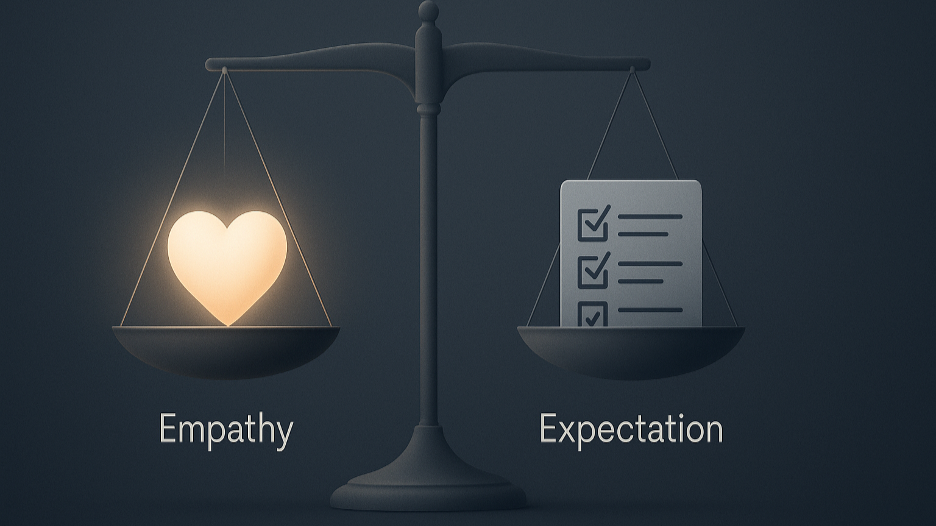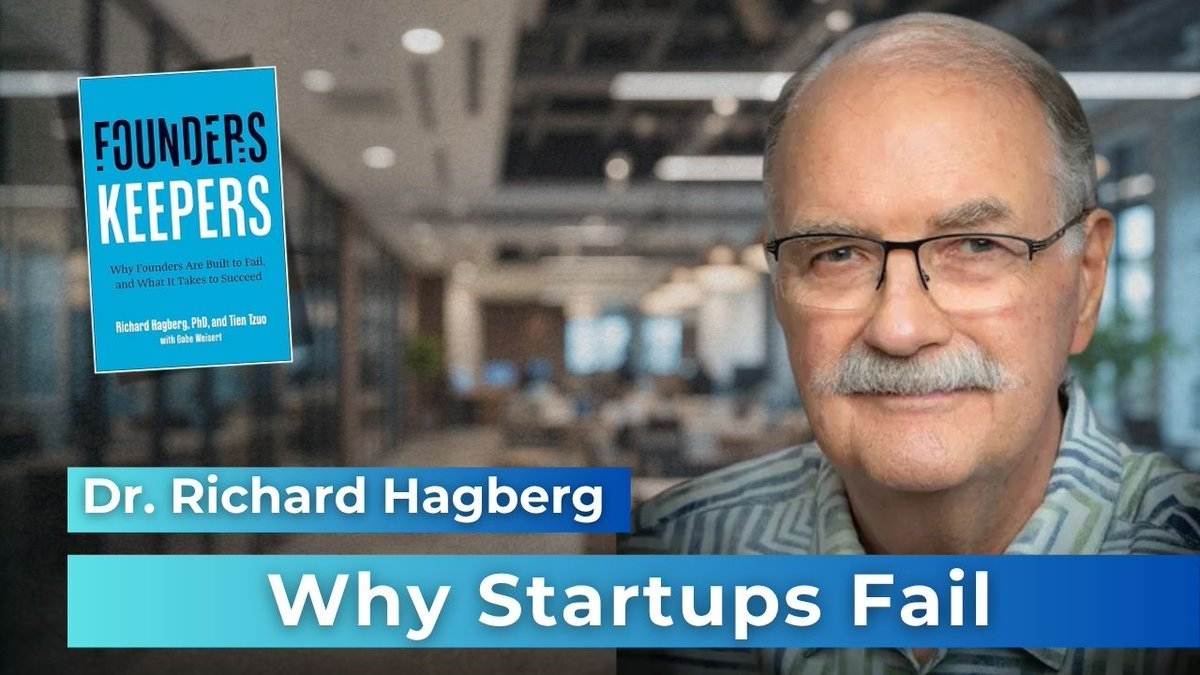Article
The Conflict That’s Killing Your Startup
December 5, 2024

It’s Monday morning, and the leadership meeting is already off the rails. Sales is frustrated with Product for delivering a “half-baked” feature. Product fires back, blaming Engineering for missing deadlines. Engineering shifts the blame to Support, claiming that they’re drowning in unresolved customer complaints. Voices are raised, tempers flare, and the founder—the supposed leader in the room—watches silently, hoping it will all blow over.
Sound familiar?
Conflict like this isn’t just a bad day at the office. It’s a cultural cancer that erodes trust, drains energy, and can tear a company apart if left unchecked. And yet, too many founders avoid addressing it. Whether it’s fear of confrontation, lack of time, or simply not knowing where to start, the result is the same: festering tensions that hurt the team and, ultimately, the business. Here’s the truth: conflict is inevitable in startups. But how you handle it determines whether it becomes your Achilles’ heel or your secret weapon.
The Founder’s Paradox: Bold Vision, Fear of Confrontation
Founders are often fearless in the face of business challenges but retreat when faced with interpersonal disputes. This paradox is pervasive: the same people who challenge markets, disrupt industries, and battle competitors will freeze when asked to mediate a disagreement between two key team members.
One founder I worked with was described by his team as “reluctant to wade into any disagreement unless it became a full-blown crisis.” His aversion to conflict was so pronounced that, when tensions arose between his engineering and marketing teams, he simply delegated the problem to his COO. Weeks later, the COO resigned, citing exhaustion from being the company’s de facto conflict manager.
Another one of my coaching clients struggled with a toxic relationship between two senior team members. She let it fester for months, hoping they’d resolve it on their own. Instead, the situation spiraled, culminating in one of the employees quitting and taking half the team with them. The fallout from her inaction left her shaken. “I thought I was avoiding a tough conversation, but I was really creating a much bigger problem,” she admitted later.
Why do founders avoid conflict? There are three primary reasons:
The result? Neglect. And as any leader who has ignored conflict knows, unresolved issues don’t go away—they grow.
The Three Deadly Patterns of Founder Conflict Avoidance
Founders don’t all handle conflict the same way, but three problematic patterns emerge repeatedly:
1. Neglecting the Problem
The most common response to conflict is doing nothing at all. Many founders believe that if they ignore a problem long enough, it will solve itself. One leader let a months-long disagreement between his head of product and his CTO linger without intervention. By the time he stepped in, the two leaders were barely on speaking terms, and product development had ground to a halt.
2. Picking Sides Some founders attempt to resolve conflicts by quickly picking a winner. While this approach may seem decisive, it often backfires. As one employee put it, “Our CEO tends to take sides in arguments, which leaves one person feeling deflated and the other emboldened. It destroys trust and discourages honest conversations in the future.”
3. Delegating Without Ownership
Other founders assume conflict resolution isn’t their job, offloading it to COOs or HR leaders. While delegation is often necessary, conflict resolution requires the founder’s involvement to set the tone and establish cultural norms. As one executive remarked, “He thinks dealing with conflict is beneath him, so it festers until someone else is forced to clean it up.”
Why Conflict Is an Opportunity in Disguise
Here’s the irony: conflict isn’t inherently bad. In fact, when managed well, it can be one of the most powerful tools for growth and innovation.
Consider the story of a startup where the sales and product teams were locked in a constant tug-of-war. Sales wanted quick fixes to address customer complaints, while Product focused on long-term innovation. The tension was palpable, with both sides blaming each other for the company’s slowing growth.
The founder, initially paralyzed by the situation, was coached to see the conflict as an opportunity rather than a threat. By bringing both teams together and facilitating a discussion about shared goals, the founder discovered that the root issue wasn’t the teams’ competing priorities but a lack of a shared product roadmap. With this clarity, the teams collaborated on a plan that balanced immediate customer needs with strategic objectives. The result? Improved morale, better alignment, and a faster path to growth.
Conflict, when reframed, becomes a lens through which hidden problems can surface. It forces teams to question assumptions, refine strategies, and align on what truly matters.
The Founder’s Framework for Conflict Resolution
Transforming conflict from a liability into an asset requires a deliberate shift in mindset and behavior. Here’s a practical framework for founders:
1. Reframe Conflict as a Catalyst
Conflict isn’t a failure—it’s a signal that something important needs attention. Instead of avoiding disagreements, lean into them as opportunities to surface new ideas and align your team.
Another founder who led a fast-growing tech company, struggled with this. His team had grown reluctant to challenge her decisions, fearing his sharp reactions. He misinterpreted their silence as agreement—until a major product launch failed. The post-mortem revealed that his team had withheld critical feedback to avoid confrontation.
Realizing his mistake, he adopted a new approach. He began framing disagreements as a chance to improve: “If we’re all nodding in a meeting, it means we’re missing something. Let’s challenge each other to find the best solution.” This mindset shift transformed his team’s culture, making debates more constructive and decisions more robust.
2. Address the Root Cause
Most conflicts are symptoms of deeper issues. A disagreement about deadlines may actually be about misaligned priorities. A clash between department heads might stem from unclear roles or resource disparities.
One founder dealt with recurring tension between his product and sales teams. At first, it seemed like a straightforward dispute about feature delivery timelines. But through structured conversations, he uncovered a deeper issue: the lack of a shared roadmap. By addressing this root cause, he not only resolved the immediate conflict but also prevented similar issues from arising in the future.
Ask yourself: What’s really driving this conflict? Digging deeper often reveals systemic problems that, once addressed, can strengthen the entire organization.
3. Create a Safe Space for Disagreement
Psychological safety—the belief that it’s safe to speak up without fear of punishment—is the foundation of effective conflict resolution. Without it, conflicts either escalate into personal attacks or remain hidden until they explode.
Another coaching client learned this the hard way. His team had developed a culture of silent resentment, with employees avoiding tough conversations for fear of reprisal. With coaching, he implemented ground rules for meetings, such as:
These small changes created an environment where disagreements were seen as a natural and necessary part of collaboration.
4. Follow Through
Conflict resolution doesn’t end with a handshake. Lingering emotions and doubts can undermine even the best agreements. Following up ensures that resolutions stick and builds trust over time.
Another client who founded a SaaS company, had a habit of declaring conflicts “resolved” and moving on. His team often felt otherwise, citing unresolved tensions that resurfaced later. By implementing a simple follow-up process checking in with both sides a week after each resolution—He began building a culture of accountability and trust.
The Ripple Effect of Better Conflict Management
When founders embrace conflict resolution, the benefits ripple through the entire organization. Teams become more cohesive, decision-making improves, and the company culture shifts from avoidance to accountability. But the impact goes beyond business metrics, it transforms the founder as well.
As one leader reflected, “I used to see conflict as a distraction. Now I see it as a chance to strengthen our team and refine our vision.”
Your Call to Action
Conflict is inevitable, but how you handle it is a choice. Will you avoid it, letting it fester and grow? Or will you face it head-on, turning it into a source of growth and innovation?
This week, take one step toward better conflict resolution:
The choice to embrace conflict isn’t easy, but it’s the mark of a true leader. And in the high-stakes world of startups, it’s a skill you can’t afford to ignore.
Sound familiar?
Conflict like this isn’t just a bad day at the office. It’s a cultural cancer that erodes trust, drains energy, and can tear a company apart if left unchecked. And yet, too many founders avoid addressing it. Whether it’s fear of confrontation, lack of time, or simply not knowing where to start, the result is the same: festering tensions that hurt the team and, ultimately, the business. Here’s the truth: conflict is inevitable in startups. But how you handle it determines whether it becomes your Achilles’ heel or your secret weapon.
The Founder’s Paradox: Bold Vision, Fear of Confrontation
Founders are often fearless in the face of business challenges but retreat when faced with interpersonal disputes. This paradox is pervasive: the same people who challenge markets, disrupt industries, and battle competitors will freeze when asked to mediate a disagreement between two key team members.
One founder I worked with was described by his team as “reluctant to wade into any disagreement unless it became a full-blown crisis.” His aversion to conflict was so pronounced that, when tensions arose between his engineering and marketing teams, he simply delegated the problem to his COO. Weeks later, the COO resigned, citing exhaustion from being the company’s de facto conflict manager.
Another one of my coaching clients struggled with a toxic relationship between two senior team members. She let it fester for months, hoping they’d resolve it on their own. Instead, the situation spiraled, culminating in one of the employees quitting and taking half the team with them. The fallout from her inaction left her shaken. “I thought I was avoiding a tough conversation, but I was really creating a much bigger problem,” she admitted later.
Why do founders avoid conflict? There are three primary reasons:
- Fear of Escalation: Many founders believe that addressing conflict will make things worse.
- Perceived Distraction: They see interpersonal issues as secondary to the “real” work of building a business.
- Emotional Avoidance: Navigating human emotions can feel uncomfortable and overwhelming.
The result? Neglect. And as any leader who has ignored conflict knows, unresolved issues don’t go away—they grow.
The Three Deadly Patterns of Founder Conflict Avoidance
Founders don’t all handle conflict the same way, but three problematic patterns emerge repeatedly:
1. Neglecting the Problem
The most common response to conflict is doing nothing at all. Many founders believe that if they ignore a problem long enough, it will solve itself. One leader let a months-long disagreement between his head of product and his CTO linger without intervention. By the time he stepped in, the two leaders were barely on speaking terms, and product development had ground to a halt.
2. Picking Sides Some founders attempt to resolve conflicts by quickly picking a winner. While this approach may seem decisive, it often backfires. As one employee put it, “Our CEO tends to take sides in arguments, which leaves one person feeling deflated and the other emboldened. It destroys trust and discourages honest conversations in the future.”
3. Delegating Without Ownership
Other founders assume conflict resolution isn’t their job, offloading it to COOs or HR leaders. While delegation is often necessary, conflict resolution requires the founder’s involvement to set the tone and establish cultural norms. As one executive remarked, “He thinks dealing with conflict is beneath him, so it festers until someone else is forced to clean it up.”
Why Conflict Is an Opportunity in Disguise
Here’s the irony: conflict isn’t inherently bad. In fact, when managed well, it can be one of the most powerful tools for growth and innovation.
Consider the story of a startup where the sales and product teams were locked in a constant tug-of-war. Sales wanted quick fixes to address customer complaints, while Product focused on long-term innovation. The tension was palpable, with both sides blaming each other for the company’s slowing growth.
The founder, initially paralyzed by the situation, was coached to see the conflict as an opportunity rather than a threat. By bringing both teams together and facilitating a discussion about shared goals, the founder discovered that the root issue wasn’t the teams’ competing priorities but a lack of a shared product roadmap. With this clarity, the teams collaborated on a plan that balanced immediate customer needs with strategic objectives. The result? Improved morale, better alignment, and a faster path to growth.
Conflict, when reframed, becomes a lens through which hidden problems can surface. It forces teams to question assumptions, refine strategies, and align on what truly matters.
The Founder’s Framework for Conflict Resolution
Transforming conflict from a liability into an asset requires a deliberate shift in mindset and behavior. Here’s a practical framework for founders:
1. Reframe Conflict as a Catalyst
Conflict isn’t a failure—it’s a signal that something important needs attention. Instead of avoiding disagreements, lean into them as opportunities to surface new ideas and align your team.
Another founder who led a fast-growing tech company, struggled with this. His team had grown reluctant to challenge her decisions, fearing his sharp reactions. He misinterpreted their silence as agreement—until a major product launch failed. The post-mortem revealed that his team had withheld critical feedback to avoid confrontation.
Realizing his mistake, he adopted a new approach. He began framing disagreements as a chance to improve: “If we’re all nodding in a meeting, it means we’re missing something. Let’s challenge each other to find the best solution.” This mindset shift transformed his team’s culture, making debates more constructive and decisions more robust.
2. Address the Root Cause
Most conflicts are symptoms of deeper issues. A disagreement about deadlines may actually be about misaligned priorities. A clash between department heads might stem from unclear roles or resource disparities.
One founder dealt with recurring tension between his product and sales teams. At first, it seemed like a straightforward dispute about feature delivery timelines. But through structured conversations, he uncovered a deeper issue: the lack of a shared roadmap. By addressing this root cause, he not only resolved the immediate conflict but also prevented similar issues from arising in the future.
Ask yourself: What’s really driving this conflict? Digging deeper often reveals systemic problems that, once addressed, can strengthen the entire organization.
3. Create a Safe Space for Disagreement
Psychological safety—the belief that it’s safe to speak up without fear of punishment—is the foundation of effective conflict resolution. Without it, conflicts either escalate into personal attacks or remain hidden until they explode.
Another coaching client learned this the hard way. His team had developed a culture of silent resentment, with employees avoiding tough conversations for fear of reprisal. With coaching, he implemented ground rules for meetings, such as:
- Encouraging dissenting opinions with phrases like, “I’d love to hear why you disagree.”
- Prohibiting interruptions during discussions.
- Validating emotions while keeping the focus on solutions.
These small changes created an environment where disagreements were seen as a natural and necessary part of collaboration.
4. Follow Through
Conflict resolution doesn’t end with a handshake. Lingering emotions and doubts can undermine even the best agreements. Following up ensures that resolutions stick and builds trust over time.
Another client who founded a SaaS company, had a habit of declaring conflicts “resolved” and moving on. His team often felt otherwise, citing unresolved tensions that resurfaced later. By implementing a simple follow-up process checking in with both sides a week after each resolution—He began building a culture of accountability and trust.
The Ripple Effect of Better Conflict Management
When founders embrace conflict resolution, the benefits ripple through the entire organization. Teams become more cohesive, decision-making improves, and the company culture shifts from avoidance to accountability. But the impact goes beyond business metrics, it transforms the founder as well.
As one leader reflected, “I used to see conflict as a distraction. Now I see it as a chance to strengthen our team and refine our vision.”
Your Call to Action
Conflict is inevitable, but how you handle it is a choice. Will you avoid it, letting it fester and grow? Or will you face it head-on, turning it into a source of growth and innovation?
This week, take one step toward better conflict resolution:
- Facilitate an open dialogue in your next team meeting.
- Check in with an employee about a tension you’ve been avoiding.
- Reflect on your own approach to conflict—are you neglecting, picking sides, or delegating without ownership?
The choice to embrace conflict isn’t easy, but it’s the mark of a true leader. And in the high-stakes world of startups, it’s a skill you can’t afford to ignore.
share this
Related Articles
Related Articles

The Nicest Boss in the World He was adored. He remembered birthdays, checked in on people’s families, and stayed late helping fix slides no one asked him to touch. His team called him “the best boss we’ve ever had.” He was also running on fumes. Behind the warm smile was a leader quietly burning out — drowning in everyone else’s problems, too empathetic for his own good. If you’re a leader who prides yourself on caring deeply, this might sting a little: empathy, taken too far, becomes control in disguise. Empathy’s Secret Shadow Empathy is essential for leadership. It builds loyalty, safety, and trust. But the same trait that makes people feel seen can also make them dependent. When you can’t tolerate someone else’s discomfort, you start protecting them from it. You step in to fix, to soothe, to rescue. It looks noble. It feels generous. But it quietly steals agency — theirs and yours. Your team stops growing because you’re doing their emotional labor. You stop leading because you’re managing feelings instead of outcomes. That’s the hidden cost of care. The Emotional Guilt Loop Over-empathetic leaders live in a constant tug-of-war between compassion and guilt. They think: “They’re already stretched — I can’t pile more on.” “If I push harder, I’ll seem uncaring.” “I’ll just do it myself; it’s easier.” Sound familiar? That’s not empathy anymore. That’s guilt masquerading as kindness. And guilt makes terrible business decisions. Because guilt doesn’t guide you toward what’s right. It just steers you away from what feels uncomfortable. A Founder’s Story One founder I coached, let’s call her Lina, led with heart. She built her company around “people first.” And she meant it. But somewhere along the way, “people first” turned into “me last.” She couldn’t say no. She kept saving underperformers, approving vacations during crunch time, rewriting others’ work to spare them stress. Her team adored her — until they didn’t. Because beneath her helpfulness was quiet resentment. And resentment always leaks. The breakthrough came when she realized something simple but hard: “I was protecting people from learning the hard parts of growth.” That’s when she started leading again instead of parenting. When Caring Becomes Control Here’s the paradox: the more you care, the more you risk over-controlling. You jump in to fix not because you don’t trust them, but because you feel for them. It’s empathy turned inward — I can’t stand watching them struggle. But leadership isn’t about eliminating discomfort. It’s about using it wisely. People grow by stretching, not by being spared. When you save someone from every failure, you’re also saving them from competence. The Biology of Burnout Chronic empathy triggers chronic stress. When you absorb other people’s emotions all day, your nervous system never gets a break. You start mirroring everyone’s anxiety like an emotional amplifier. Your brain thinks you’re in crisis — even when you’re not. That’s why over-caring leaders are often the first to burn out. Their compassion becomes constant cortisol. The irony? The leaders who want to create safety for others end up unsafe themselves. How to Care Without Carrying Feel, then filter. It’s okay to feel someone’s frustration. Just don’t keep it. Ask: “Is this mine to hold?” Help through accountability. Say, “I know this is tough, and I also need you to take ownership.” The and matters. Let discomfort be developmental. When a team member struggles, resist rescuing. Stay present, not protective. Coach before you comfort. Instead of “Don’t worry,” try, “What do you think your next move is?” Reframe empathy as empowerment. Caring isn’t about absorbing pain; it’s about believing people can handle it. Funny but True One exec I worked with told me, “Every time I stop helping, I feel like a jerk.” I said, “No — you feel like a leader. It just takes a while to tell the difference.” He laughed and said, “So… you’re telling me leadership feels bad at first?” I said, “Exactly. Growth always does.” The Cultural Ripple Effect When leaders overfunction, teams underfunction. When leaders hold space instead of taking space, teams rise. Empathy should expand others, not consume you. The healthiest cultures balance care and candor — support and stretch. They normalize struggle as part of the process instead of something to be hidden or rescued. That’s what real compassion looks like in motion. The Maturity of Tough Empathy Empathy without boundaries is exhaustion. Empathy with boundaries is wisdom. The mature version of empathy doesn’t say, “I’ll protect you.” It says, “I believe you can handle this — and I’ll walk beside you while you do.” That’s not cold. That’s developmental. Your Challenge This Week Notice where you’re rescuing someone instead of coaching them. Pause before you step in. Ask yourself, Am I helping because they need it — or because I need to feel helpful? Then take one small risk: let them handle it. They’ll probably surprise you. And you’ll feel lighter than you have in months. Final Word Caring is beautiful. It’s what makes you human. But unchecked empathy turns leaders into emotional pack mules — carrying what was never theirs to bear. Real leadership is still full of heart. It just remembers that compassion without accountability isn’t love. It’s fear. And the moment you stop rescuing everyone, you finally start freeing them — and yourself.s)

The Smart Leader’s Blind Spot It’s strange how often the smartest people make the worst decisions under pressure. They don’t lose IQ. They lose perspective. I’ve seen this happen more times than I can count. A sharp, decisive executive starts second-guessing every move. They overanalyze, overwork, and overcontrol — all in the name of being “thorough.” They think they’re being rational. But underneath the spreadsheets and meetings is something far less logical. It’s fear. The Fear That Doesn’t Look Like Fear We think of fear as panic — sweating, shaking, obvious. But most leadership fear hides behind competence. It shows up as perfectionism, busyness, overcommitment, indecision. It sounds like, “Let’s get more data.” “Let’s not rush this.” “Let’s keep this one close.” That’s not analysis. That’s avoidance with a better vocabulary. When fear runs the show, the goal subtly shifts from making the right decision to avoiding the wrong one. And those two things are worlds apart. The Cost of Fear-Based Leadership When leaders operate from fear, everything tightens. They stop listening. They rush to defend. They play small when the company needs boldness. They keep people who are loyal over people who are competent — because loyalty feels safer. And here’s the real tragedy: the team starts copying the fear. They become cautious, compliant, quiet. Pretty soon, no one’s leading anymore. They’re all managing risk — mostly emotional risk. A CEO’s Moment of Truth One CEO I coached — brilliant, confident, deeply human — was terrified of being wrong in front of his board. He masked it well. On the outside: decisive. Inside: a constant hum of anxiety. After a tough quarter, he admitted, “I realized half my decisions weren’t based on strategy — they were based on protecting my image.” That moment of honesty was the start of his maturity curve. Once he could name the fear, it stopped running his show. He didn’t become fearless. He became aware. And awareness is what turns reaction into wisdom. Why Fear Feels Safer Than Clarity Fear has a strange way of convincing us it’s caution. Caution whispers, “Slow down and look.” Fear screams, “Don’t move.” The first sharpens judgment. The second paralyzes it. And the more we listen to fear, the more it disguises itself as prudence. That’s why emotional maturity isn’t about suppressing fear. It’s about being able to say, “Ah, that’s fear talking — not fact.” How Fear Distorts the Mind Here’s what happens when fear hijacks leadership: Tunnel vision: You fixate on the immediate threat and forget the big picture. Confirmation bias: You start looking for data that validates your anxiety. Short-termism: You make safe decisions that feel good now and cause pain later. Blame shifting: You protect your ego by pushing ownership outward. The mind gets smaller. The leader gets reactive. The company gets stuck. The Maturity Shift Emotional maturity isn’t about being unshakable. It’s about staying curious in the presence of fear. Mature leaders don’t pretend they’re fearless. They just don’t let fear make the decisions. They pause, breathe, and ask, “What part of this is data, and what part is my insecurity talking?” That single question can change everything. A Founder’s Story A founder I worked with once said, “I’m not afraid — I just have high standards.” But as we unpacked it, he realized those “high standards” were actually a way to control outcomes. He feared disappointment — his own and others’. When he finally stopped trying to protect his reputation and started protecting his clarity, his decisions got faster and cleaner. The business didn’t just grow — it started breathing again. Because when you stop trying to look right, you finally have room to be right. Funny, But True I once asked a CEO what he’d do differently if he weren’t afraid of failing. He said, “Probably the same things I’m doing now — just with less Advil.” That’s the thing: most leaders already know what to do. Fear just makes it hurt more. How to Lead Without Fear (Even When It’s There) Name it early. The sooner you recognize fear, the less power it has. Ask yourself, “What’s the story fear’s telling me right now?” Reframe mistakes as tuition. You’ll still pay for errors — might as well learn something from them. Separate identity from outcome. A bad decision doesn’t mean a bad leader. It means a leader who’s still learning — like everyone else. Keep one truth-teller nearby. Someone who loves you enough to tell you when you’re acting from ego. Practice micro-bravery. Tell one hard truth a day. Say “I don’t know” once a week. Let discomfort become strength training. The Paradox of Fear Fear doesn’t make you weak. It means you care. But if you never face it, it becomes your compass — and it always points backward. Courage, maturity, clarity — they’re not opposites of fear. They’re what happen when you stop running from it. Your Challenge This Week Next time you feel that knot in your stomach — before a board meeting, a tough conversation, a high-stakes call — pause. Ask yourself: What am I afraid might happen? Then ask: What might happen if I act from clarity instead of fear? That’s not therapy. That’s leadership hygiene. Final Word The mark of maturity isn’t fearlessness. It’s self-awareness. You can’t control your fear. But you can choose whether it sits in the driver’s seat or the passenger’s. Great leaders don’t wait for fear to disappear. They lead with it beside them — quietly, respectfully — but never in charge.

The Charisma Illusion Charisma gets all the press. It fills conference rooms, wins funding rounds, and dominates the LinkedIn highlight reel. We treat it like the gold standard of leadership — as if volume equals vision. But charisma is a sugar high. It spikes energy, then crashes trust. Composure, on the other hand — quiet, grounded, centered composure — is the kind of influence that lasts. It doesn’t light up a room; it settles one. When things go sideways, it’s not the charismatic leader people look for. It’s the calm one. The Crisis Test Picture this. The product just failed. The client’s furious. Your team’s pacing like trapped cats. Two leaders walk in. One storms into action — loud, fast, “What the hell happened here?” The other walks in slowly, looks around, and says, “Okay, let’s breathe. What do we know so far?” The first one gets attention. The second one gets results. That’s emotional geometry — the calmest person in the room reshapes everyone else’s state. Why Calm Is the Real Power When you stay composed, you’re not just managing your emotions — you’re regulating the entire system. Here’s the neuroscience behind it: people mirror the nervous system of whoever has the most authority. If you’re grounded, they sync to your rhythm. If you’re frantic, they sync to that instead. You don’t need to lecture anyone on resilience. You just have to model it. It’s not charisma that makes people trust you; it’s the quiet sense that you’re not going to lose your mind when things get hard. Charisma’s Half-Life Charisma is a spark. It can ignite a team — but if there’s no composure beneath it, the whole thing burns out. You’ve seen this movie before: the leader who rallies everyone with a passionate all-hands speech, then disappears into reaction mode when things get messy. Charisma without composure is like caffeine without sleep. You’re awake, but you’re not steady. Composure doesn’t get the applause. It gets the loyalty. A Founder’s Story One founder I worked with — I’ll call him David — was known for being a “high-voltage” guy. He could pitch an investor, fire up a crowd, or talk anyone into anything. But his team? They were walking on eggshells. His energy filled every room, but it left no oxygen for anyone else. During one session, I asked, “When you raise your voice, what happens to theirs?” He went quiet. That was the moment he understood that his passion — the thing he was most proud of — had become the team’s anxiety. A year later, his team described him differently: “He’s still intense, but steady. We trust him more now.” He didn’t lose charisma; he layered it with composure. The Calm Before the Influence Here’s what composure actually looks like: You listen longer. Because real influence starts with attention, not argument. You breathe before reacting. That pause isn’t weakness; it’s power management. You let silence do the work. Charisma fills every space; composure creates space for others to step in. You own your tone. You realize your sighs, your speed, your face — they’re all communication tools whether you intend them or not. You choose steadiness over certainty. People don’t need you to know everything. They just need to know you’re okay not knowing. Funny But True A client once told me, “When I’m calm in a meeting, people assume I’m hiding something.” I said, “Good. Let them wonder.” That’s how unfamiliar calm has become. In some cultures, composure looks radical — even suspicious. But it’s exactly what people crave in a world that never shuts up. Why Charisma Is Easier (and More Addictive) Charisma gets feedback. You see the energy rise, you feel the applause. It’s visible. Composure feels invisible — until you lose it. No one thanks you for staying calm during a crisis. But they remember it when deciding whether to follow you into the next one. That’s why maturity in leadership means getting comfortable with the quiet wins — the meeting that didn’t spiral, the argument that didn’t happen, the team that stayed focused because you did. The Emotional Geometry in Practice Think of composure as geometry because emotions move through space. When you enter a room, you alter its emotional shape. If you radiate calm, people’s shoulders drop. Their thinking widens. They start contributing. If you radiate stress, the room contracts. People shrink. Ideas vanish. Influence isn’t what you say. It’s the energy field you create. Your Challenge This Week Before your next high-stakes meeting, pause outside the door. Take one deep breath and ask yourself: What energy does this room need from me right now? Then bring only that. Nothing more. You’ll be amazed how fast everything slows down when you do. Final Word Charisma captures attention. Composure builds trust. One is about how loudly you shine; the other is about how steadily you glow. The leader who can stay centered when everyone else is spinning doesn’t just have influence — they are the influence. And that’s the kind of power that never burns out.
STAY UP TO DATE
GET PATH'S LATEST
Receive bi-weekly updates from the church, and get a heads up on upcoming events.
Contact Us








